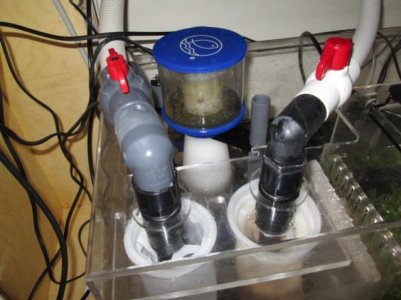Hello folks,
I hope this post finds everyone well. I've got what I hope to be some quick questions. Forgive me for asking what I'm sure has been discussed somewhere in the tome-length thread. 250 pages is a lot to sift through, my apologies.
I've just inherited two very large (for me) tanks; 6x3x2, 300gal, both with two 2" holes drilled dead center. My questions pertain to what will be a freshwater planted system with approx 1200gph flow. Due to the nature of the system a pre-fab toothed overflow works well for my needs.
Q1- The 1.5" elbows just BARELY fit into the overflow. The siphon elbow has been cut to give plenty of space for flow but it's right up against the wall of the overflow. My questions are:
would a pair of 1", and in general 1" pipe, be suitable for 1200gph? Other than noise, is there a potential future issue with the elbows being so close to the overflow wall? I've used a 1.5" and 1" set of Durso downdrafts with this much flow before, but never a system like this.
Q2-
Are there inherent issues with having the ball valve at the terminal end of the pipe rather than next to the T? The reason I ask is if I need to be using 1.5" pipe or 1" intake elbows (Q1) I can see a possible need to restrict flow at the terminus in order to keep the main drain line full of water. Then again, I've never had a sump where the drain is submerged. Is that enough back pressure to fill a pipe as big as 1.5" with that little flow?

Thank you for your help,
Phil



